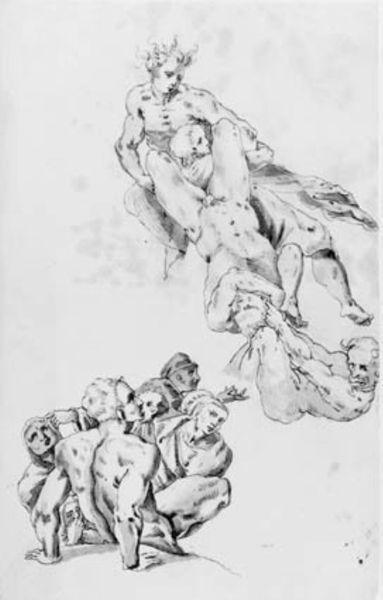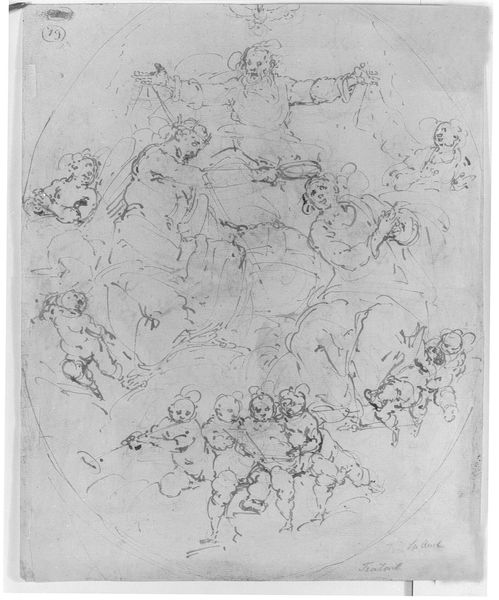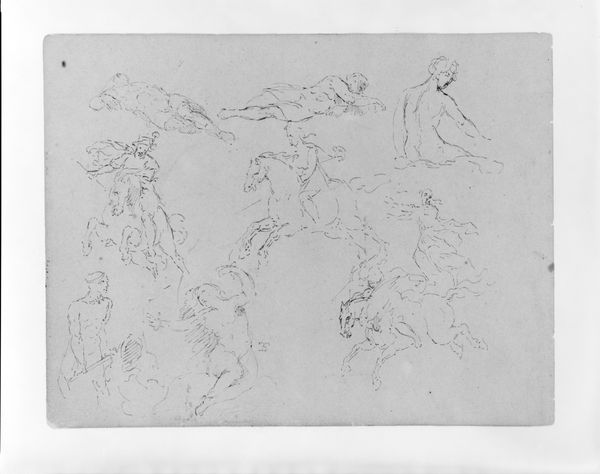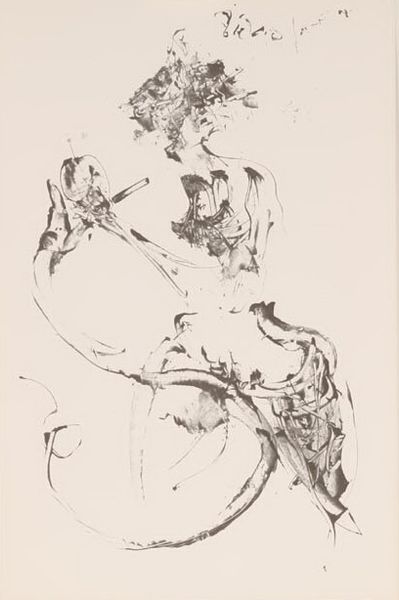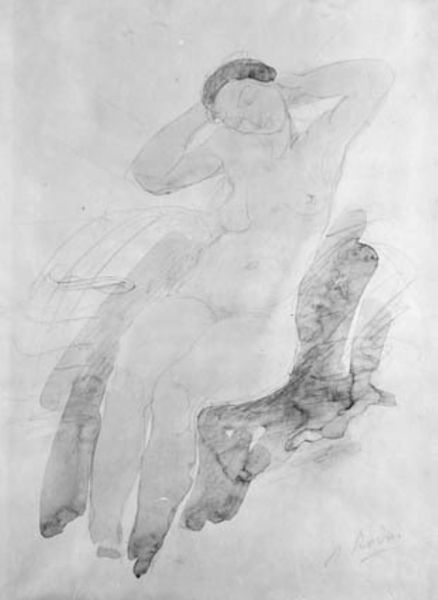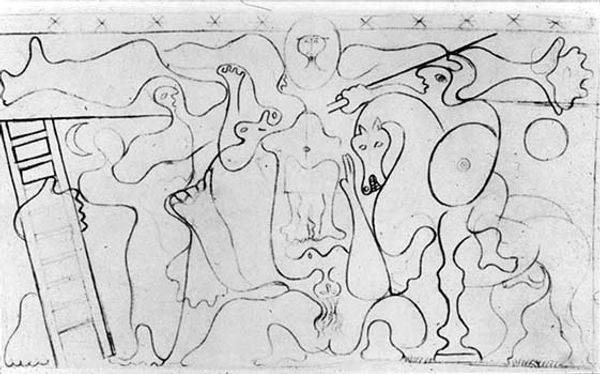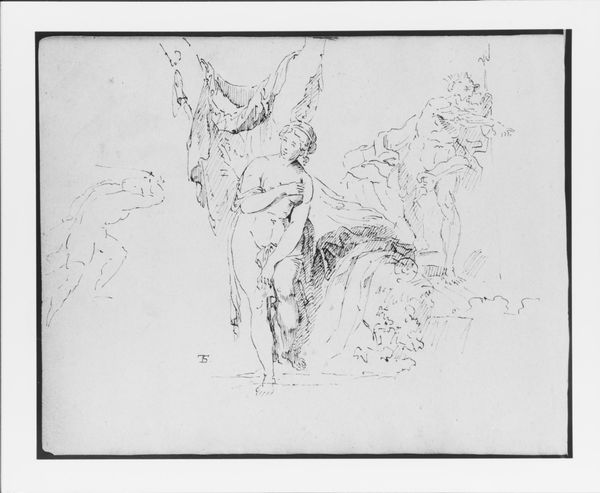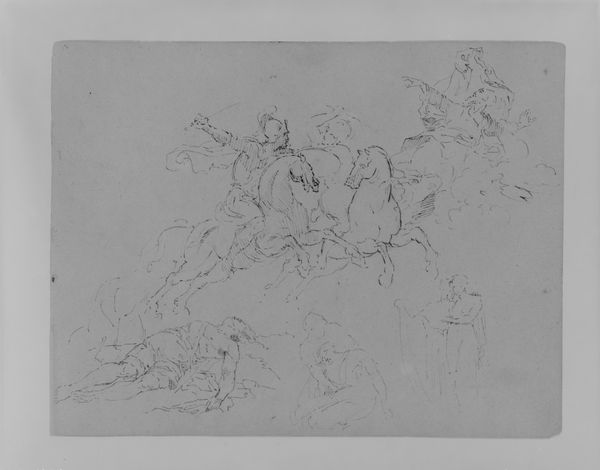
Ascending nudes with the lance and column from the right lunette of the Last Judgement, Sistine Chapel 18th century
0:00
0:00
drawing, ink, pen
#
drawing
#
ink drawing
#
pen sketch
#
figuration
#
11_renaissance
#
ink
#
pen
#
history-painting
#
italian-renaissance
#
nude
Dimensions: 273 mm (height) x 368 mm (width) (bladmaal)
Curator: This dynamic drawing, "Ascending nudes with the lance and column from the right lunette of the Last Judgement, Sistine Chapel," likely dates to the 18th century. Created with pen and ink, it’s currently held at the SMK, the Statens Museum for Kunst. Editor: Whoa, talk about a scrum! My first thought is just... limbs, limbs everywhere! It’s a flurry of bodies struggling to lift some serious symbolic hardware, and the overall feeling is just…intense. Curator: It’s intriguing to consider the composition’s connection to the broader historical and theological implications of the Last Judgment. Think about how these nude figures relate to evolving interpretations of power and the body, within religious art during this period. There is a real tension evident, that is between the classical appreciation of form and religious narrative. Editor: Definitely tense. Like, are they ascending? Or falling? There’s this real precariousness to it, a struggle. I also get a strong sense of the weight, not just of the objects they carry, but the weight of judgment itself. They are so serious, every single face. No hint of humour! I guess, as the artist, I would feel the urge to subvert this with something unexpected! Curator: And thinking intersectionally, how might we understand the representation of the nude form here? Are these generalized, idealized bodies or is something else at play, in this apparent study for such an important part of art history. There is some element of an interesting divergence in aesthetic that is starting to gain traction in later artworks, for instance where the 'idealised' nude becomes the everyday nude, thus being highly controversial. Editor: I'd wager it’s both, idealised and a real study in human form. It’s like the artist is wrestling with the divine ideal whilst staying grounded in earthly observation. You know, the little details of strain and effort they bring such raw character, almost as if it becomes an anti-perfection perfection! But I love how art does that. Shows us something beautifully flawed. Curator: A great insight! To truly grasp this piece, consider what kind of questions these observations pose in light of current theoretical discourses around identity, representation, and the ongoing cultural dialogue with these monumental figures and artworks from the Renaissance period. Editor: It certainly sparks so many connections, doesn’t it? From the tactile feeling of the ink to the symbolic load, it really grabs you and makes you think – not just about the art, but everything else it touches too!
Comments
No comments
Be the first to comment and join the conversation on the ultimate creative platform.


